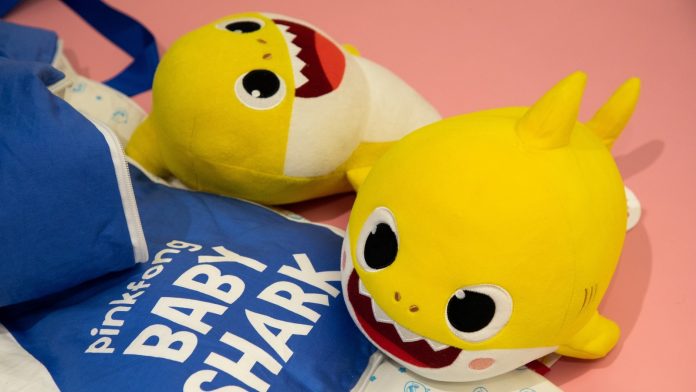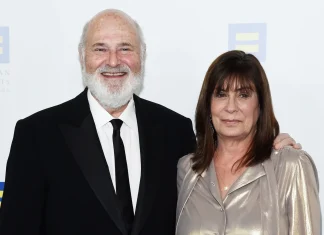
The Battle Beneath the Waves: The Untold Story Behind ‘Baby Shark’s’ Global Reign
In a world awash with digital tunes, viral challenges, and fleeting trends, few phenomena have gripped the hearts—and ears—of families worldwide quite like “Baby Shark.” That infectious melody, the one that turns even the most stoic adult into a foot-tapping, finger-snapping bundle of energy, is no mere children’s tune.
It is an unprecedented global sensation, a cultural tsunami that keeps rolling in with more than 16 billion views on YouTube—a number that dwarfs even the most massive viral hits like Luis Fonsi’s “Despacito.”
But beneath the bubbly surface of nursery rhymes and toothy dances lies a quieter, more complex tale—an epic courtroom drama that challenges what ownership means in the digital age, and how traditional songs traverse borders, cultures, and legal systems.
Who Owns a Shark? The Copyright Clash That Captivated Courts
The story began back in 2019 when Jonathan Wright—better known in the music world as Johnny Only—a composer based in New York, stepped forward with a bold claim. He alleged in the Seoul legal system that the smash hit “Baby Shark,” produced by South Korea’s SmartStudy (now The Pinkfong Company), was in fact a copycat effort of a song he had created in 2011.
This wasn’t an accusation tossed casually into the mix. Wright argued the iconic bass line and rhythm were lifted from his toddler-friendly revision of “Baby Shark”—a tune that originally told a far darker tale of a shark attack before he reimagined it. Mr. Only sought compensation of 30 million won (roughly €18,544), hoping to be acknowledged as the creative originator.
SmartStudy fought back, anchoring its defense in a critical distinction: the “Baby Shark” melody is no original invention but rather an adaptation of a classic North American children’s singalong chant, a melody that has drifted freely in the public domain for generations.
Why This Case Means More Than Just a Tune
At first glance, this legal back-and-forth may strike some as trivial—how serious can disputes over children’s songs be? Yet, this case shines a spotlight on a broader, more urgent global debate about intellectual property, cultural heritage, and the blurry lines between homage and theft. What happens when folk songs evolve, cross cultures, and find new life in modern media? Can traditional melodies ever truly be owned?
Legal experts note that “Baby Shark” is emblematic of so many creative works that spring from folklore. As Dr. Min-Soo Kim, a professor of cultural law at Seoul National University, explains, “The Internet era has amplified how folk culture circulates, creating legal gray zones. Songs like ‘Baby Shark’ are communal property in spirit, but commercialized versions can muddy waters about rights.”
The Courts Speak: South Korea’s Supreme Court Weighs In
Following a contentious series of legal battles, the South Korean judiciary has finally put a definitive stamp on the dispute. The nation’s highest court declined the composer’s appeal, affirming prior judgments that there was insufficient evidence to prove plagiarism.
In practical terms, this means Pinkfong’s “Baby Shark” stands tall—not only as the world’s favorite aquatic anthem but as a creation rightfully grounded in the shared cultural pool. The company’s statement celebrated the ruling: “The Supreme Court decision confirms that ‘Baby Shark’ is based on a traditional singalong chant that belongs to the public domain. We have merely given it a fresh, upbeat rhythm and catchy melody, transforming it into the pop culture icon beloved across generations.”
Such rulings underscore how the law grapples with creativity that springs from communal reservoirs—does injecting new rhythm and personality into a folk tune constitute a novel work? In the eyes of South Korea’s judiciary, the answer is a nuanced yes.
A Viral Song With Global Roots and Local Flavor
Take a moment to imagine a playground somewhere in Seoul or a living room in Lima, Tunisia, or Sydney. Children stretch their hands wide, making shark teeth snapping gestures, singing about Baby Shark, Mommy Shark, and Daddy Shark, caught in the joyful simplicity of a melody as old as storytelling itself. This song resonates because it feels like a shared human experience—one that transcends language, borders, and even legal lines.
The tune is simple, repetitive, and irresistibly catchy—perfect for children, perfect for adults who inevitably find themselves enveloped in it unwillingly.
“It’s the ultimate earworm,” says Professor Lee Hana, a cognitive psychologist specializing in music perception. “Its repetitive structure and clear call-and-response style stimulate memory and engagement, which is why kids love it and parents can’t forget it.”
A Walk on the Cultural Depths
“Baby Shark” is a modern evolution of a folk tradition that dates back decades in North America. Folk music often travels orally, reshaped by every singer and every community. What Pinkfong achieved was to capture this communal spirit while supercharging it for the digital age through colorful animation, smart marketing, and a dance-along frenzy.
It resonates because many children’s rhymes have a shared DNA, and the notion of a copyright stonewall hardens when folk culture feels involved.
What Does This Mean for Global Creativity and Culture?
As you read this, have you ever wondered how culture travels? What we think of as original is often an intertwined tapestry of voices and traditions. In a rapidly globalizing world—with digital platforms powering the spread of content—navigating copyrights around folk definitions is increasingly tricky.
This case offers us a chance to reflect: How do we protect individual creativity without suffocating the shared cultural heritage that fuels art, music, and storytelling? How do we celebrate creativity that revives and reshapes folk motifs while respecting origins?
Ultimately, “Baby Shark” is more than a viral video. It is a symbol of cross-cultural creativity, a testament to the power of collective memory, and a window into how intellectual property has to evolve alongside our shifting world. The joyful snapping, the upbeat rhythm—they remind us that sometimes the smallest of melodies can spark the biggest waves.
So, what’s next?
As the courtroom drama fades, the song endures, swimming onward through playgrounds, smartphones, and families’ hearts everywhere. It invites us to ask: which songs will define the next generation? And how will the joys and conflicts around intellectual property shape the art we pass forward?
The “Baby Shark” saga might have settled legally, but its real legacy lies in its ability to connect us—a reminder that, at the end of the day, we all share stories, rhythms, and memories in the vast, ever-changing ocean of culture.









